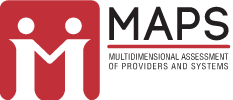Person-Directed Planning
In Ontario, the use of “person-directed planning” (PDP) was included in recent legislation as a service to promote social inclusion, choice, and independence. Our work has focused on: (1) identifying the key elements of a person-directed approach to planning; (2) reviewing planning practices in Ontario’s developmental services sector; (3) understanding the lived planning experience of adults with intellectual and developmental disabilities and their planning teams; (4) identifying how planning practices have been, or could be, measured; and (5) highlighting successes achieved through person-directed planning approaches.
Key Findings
- PDP is an approach to planning that facilitates person-directed living by redistributing power from the service system to individuals with IDD and their natural supports; improving relationships; and building community capacity. PDP necessitates the involvement of the right people with the right attitudes who engage in the right actions.
-
- In Ontario, just under 80% of developmental services agencies use a blended approach to planning supports and services – for example, using multiple formal planning tools (e.g., Personal Outcome Measures, Getting to Know You, Essential Lifestyle Planning), aspects of several tools, or tools that they have developed on their own. They also collect a lot of information about planning practices, which could be useful for assessing and monitoring planning practices.
- Planning team members identified a number of important aspects of planning that also pose challenges – for example, related to the person having a voice and making choices; teams including the right people, who have the right attitudes, and engage in the right actions; and plans that focus on the person, identify concrete actions and supports to assist in the achievement of goals, and result in changes in the person’s life.
- There is no ‘gold standard’ scale to measure planning approaches. MAPS has recommended a total of 75 indicators to help assess and monitor the extent to which planning teams, agencies, the developmental services system, and the environment facilitate the shift toward person-directed living. The data needed to derive these indicators will require the use of diverse methods of data collection and various informants. Capacity exists to begin assessing and monitoring 24 of the proposed indicators.
- While planning teams agree on the importance of a number of aspects of PDP, the way in which these contribute to individual planning successes differs because of specific goals, strengths, and needs.
Resources
To see how PDP can help people to achieve their goals, see our videos.
Current Projects
None
Past Projects
-
Funded by an Ontario Ministry of Community and Social Services Developmental Services Research Grant (2013-2015); it also received Enhancement Funding (2014-2015)
Principal investigators: H. Ouellette-Kuntz, Lynn Martin and Virginie Cobigo- Understanding the lived planning experience (2012-2013)
- A framework for understanding and assessing the extent to which planning team members, agencies, the system and the social environment facilitate PDP (2012-2013)
- Identifying planning practices in Ontario’s developmental services sector (2011-2012)
-
- Funded by an Ontario Ministry of Community and Social Services Developmental Services Research Grant (2013-2015); it also received Enhancement Funding (2014-2015)
- (2010-2013), funded by an Ontario Ministry of Community and Social Services Developmental Services Research Grant
- Principal investigators: H. Ouellette-Kuntz, Lynn Martin
